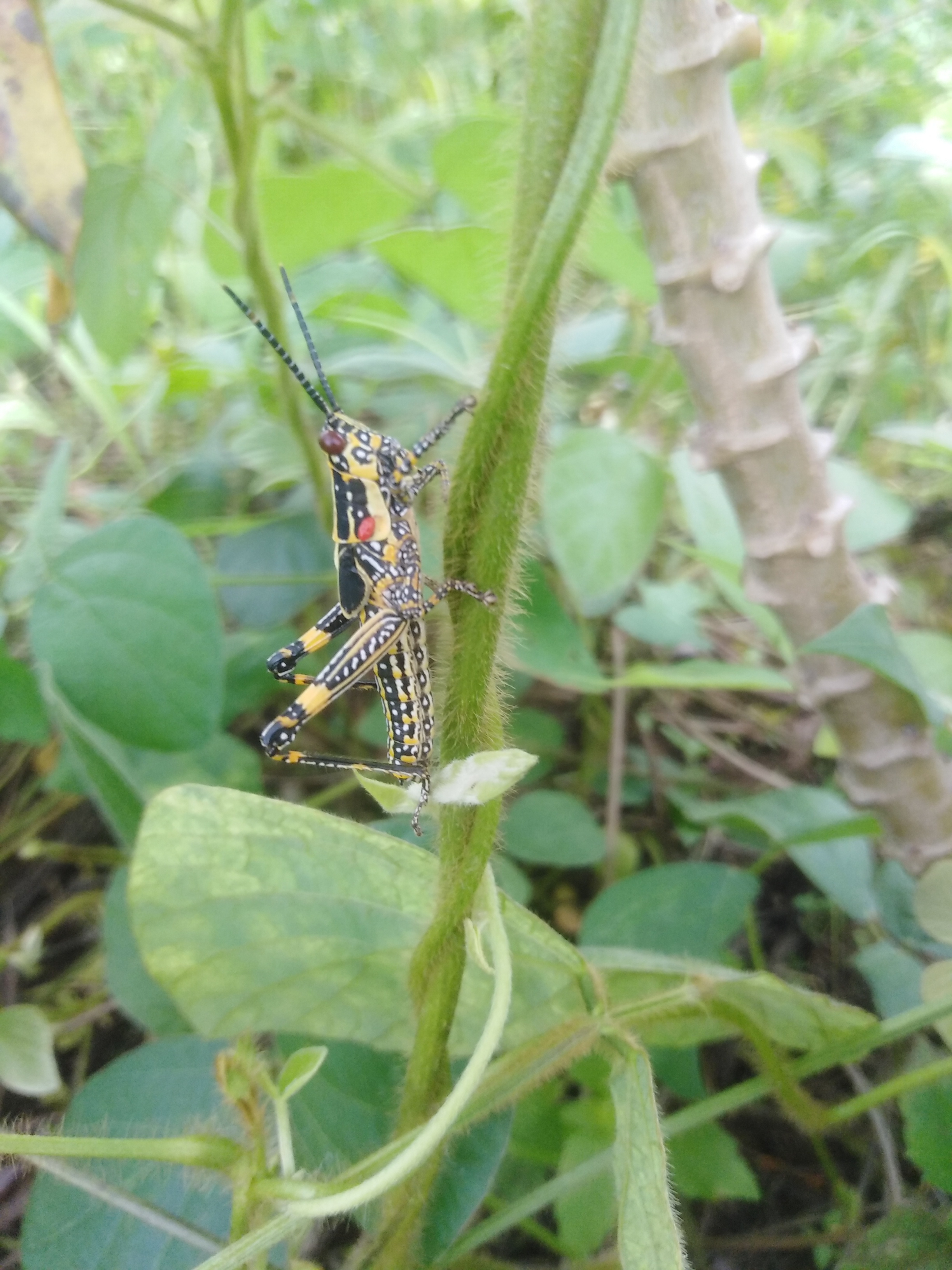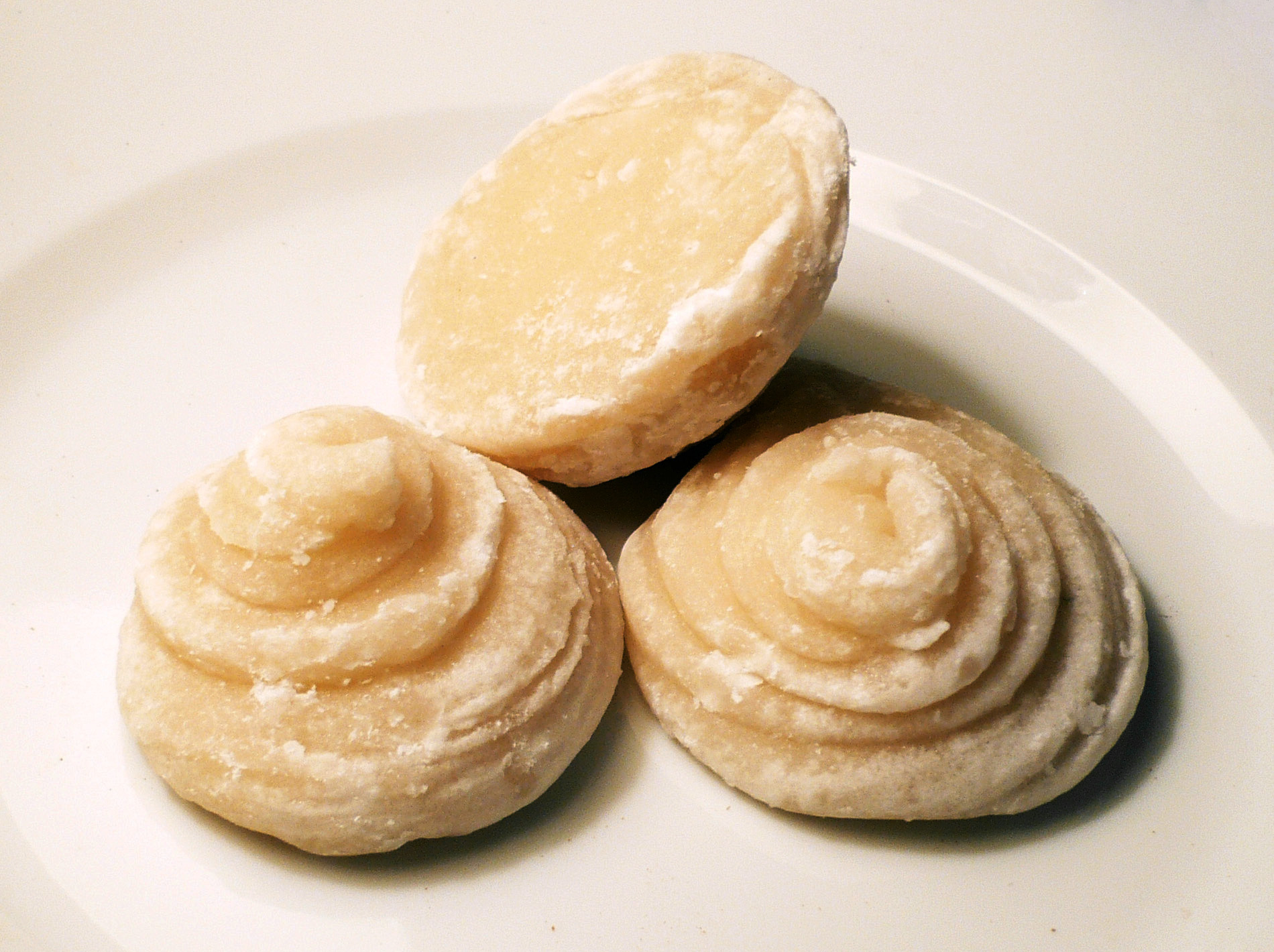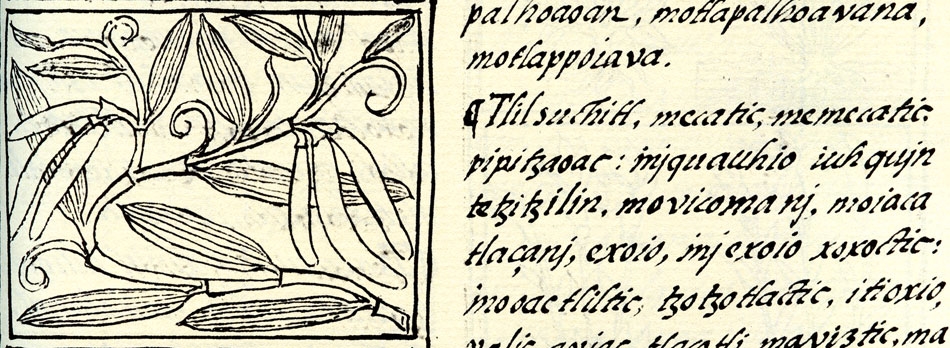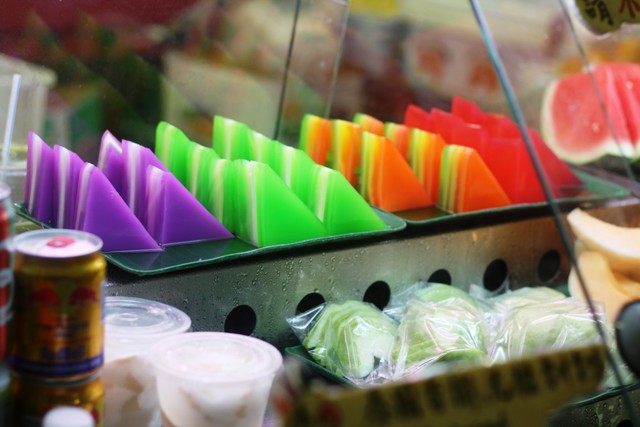|
Getuk
Gethuk is an Indonesian- Javanese dish made from cassava. The cassava is peeled, boiled and mashed. Then it is mixed with grated coconut, sugar and small amounts of salt. Sugar can also be replaced with palm sugar to give it brownish color and more distinctive taste. Other method to make gethuk is by grinding it with meat grinder and cut it into cubes. This kind of getuk also known as getuk lindri. While grinding butter, sugar, salt, and sometimes also milk powder, vanilla, and food coloring is added. Usually sold by seller that goes around the neighborhood in East Java. See also * Kue lapis * Javanese cuisine Javanese cuisine () is the cuisine of Javanese people, a major Native Indonesian, ethnic group in Indonesia in the provinces of Central Java, Yogyakarta, and East Java. Definition Javanese cuisine refers exclusively to the cuisine of Javan ... References Javanese cuisine Vegetarian dishes of Indonesia Kue Street food in Indonesia {{Indonesia-c ... [...More Info...] [...Related Items...] OR: [Wikipedia] [Google] [Baidu] |
Indonesia
Indonesia, officially the Republic of Indonesia, is a country in Southeast Asia and Oceania, between the Indian Ocean, Indian and Pacific Ocean, Pacific oceans. Comprising over List of islands of Indonesia, 17,000 islands, including Sumatra, Java, Sulawesi, and parts of Borneo and New Guinea, Indonesia is the world's largest archipelagic state and the List of countries and dependencies by area, 14th-largest country by area, at . With over 280 million people, Indonesia is the world's List of countries and dependencies by population, fourth-most-populous country and the most populous Islam by country, Muslim-majority country. Java, the world's List of islands by population, most populous island, is home to more than half of the country's population. Indonesia operates as a Presidential system, presidential republic with an elected People's Consultative Assembly, legislature and consists of Provinces of Indonesia, 38 provinces, nine of which have Autonomous administrative divisi ... [...More Info...] [...Related Items...] OR: [Wikipedia] [Google] [Baidu] |
Java
Java is one of the Greater Sunda Islands in Indonesia. It is bordered by the Indian Ocean to the south and the Java Sea (a part of Pacific Ocean) to the north. With a population of 156.9 million people (including Madura) in mid 2024, projected to rise to 158 million at mid 2025, Java is the world's List of islands by population, most populous island, home to approximately 55.7% of the Demographics of Indonesia, Indonesian population (only approximately 44.3% of Indonesian population live outside Java). Indonesia's capital city, Jakarta, is on Java's northwestern coast. Many of the best known events in Indonesian history took place on Java. It was the centre of powerful Hindu-Buddhist empires, the Islamic sultanates, and the core of the colonial Dutch East Indies. Java was also the center of the History of Indonesia, Indonesian struggle for independence during the 1930s and 1940s. Java dominates Indonesia politically, economically and culturally. Four of Indonesia's eig ... [...More Info...] [...Related Items...] OR: [Wikipedia] [Google] [Baidu] |
Southeast Asia
Southeast Asia is the geographical United Nations geoscheme for Asia#South-eastern Asia, southeastern region of Asia, consisting of the regions that are situated south of China, east of the Indian subcontinent, and northwest of the Mainland Australia, Australian mainland, which is part of Oceania. Southeast Asia is bordered to the north by East Asia, to the west by South Asia and the Bay of Bengal, to the east by Oceania and the Pacific Ocean, and to the south by Australia (continent), Australia and the Indian Ocean. Apart from the British Indian Ocean Territory and two out of Atolls of the Maldives, 26 atolls of the Maldives in South Asia, Maritime Southeast Asia is the only other subregion of Asia that lies partly within the Southern Hemisphere. Mainland Southeast Asia is entirely in the Northern Hemisphere. Timor-Leste and the southern portion of Indonesia are the parts of Southeast Asia that lie south of the equator. The region lies near the intersection of Plate tectonics, ... [...More Info...] [...Related Items...] OR: [Wikipedia] [Google] [Baidu] |
Cassava
''Manihot esculenta'', common name, commonly called cassava, manioc, or yuca (among numerous regional names), is a woody shrub of the spurge family, Euphorbiaceae, native to South America, from Brazil, Paraguay and parts of the Andes. Although a perennial plant, cassava is extensively cultivated in tropical and subtropical regions as an annual crop for its edible starchy tuberous root. Cassava is predominantly consumed in boiled form, but substantial quantities are processed to extract cassava starch, called tapioca, which is used for food, animal feed, and industrial purposes. The Brazilian , and the related ''garri'' of West Africa, is an edible coarse flour obtained by grating cassava roots, pressing moisture off the obtained grated pulp, and finally drying it (and roasting in the case of both and ''garri''). Cassava is the third-largest source of carbohydrates in food in the tropics, after rice and maize, making it an important staple food, staple; more than 500 million pe ... [...More Info...] [...Related Items...] OR: [Wikipedia] [Google] [Baidu] |
Coconut
The coconut tree (''Cocos nucifera'') is a member of the palm tree family (biology), family (Arecaceae) and the only living species of the genus ''Cocos''. The term "coconut" (or the archaic "cocoanut") can refer to the whole coconut palm, the seed, or the fruit, which botanically is a drupe, not a Nut (fruit), nut. Originally native to Central Indo-Pacific, they are now ubiquitous in coastal tropical regions and are a cultural icon of the tropics. The coconut tree provides food, fuel, cosmetics, folk medicine and building materials, among many other uses. The inner flesh of the mature seed, as well as the coconut milk extracted from it, forms a regular part of the diets of many people in the tropics and subtropics. Coconuts are distinct from other fruits because their endosperm contains a large quantity of an almost clear liquid, called "coconut water" or "coconut juice". Mature, ripe coconuts can be used as edible seeds, or processed for Coconut oil, oil and Coconut milk, ... [...More Info...] [...Related Items...] OR: [Wikipedia] [Google] [Baidu] |
Sugar
Sugar is the generic name for sweet-tasting, soluble carbohydrates, many of which are used in food. Simple sugars, also called monosaccharides, include glucose Glucose is a sugar with the Chemical formula#Molecular formula, molecular formula , which is often abbreviated as Glc. It is overall the most abundant monosaccharide, a subcategory of carbohydrates. It is mainly made by plants and most algae d ..., fructose, and galactose. Compound sugars, also called disaccharides or double sugars, are molecules made of two bonded monosaccharides; common examples are sucrose (glucose + fructose), lactose (glucose + galactose), and maltose (two molecules of glucose). White sugar is almost pure sucrose. In the body, compound sugars are hydrolysed into simple sugars. Longer chains of monosaccharides (>2) are not regarded as sugars and are called oligosaccharides or polysaccharides. Starch is a glucose polymer found in plants, the most abundant source of energy in human foo ... [...More Info...] [...Related Items...] OR: [Wikipedia] [Google] [Baidu] |
Javanese Cuisine
Javanese cuisine () is the cuisine of Javanese people, a major Native Indonesian, ethnic group in Indonesia in the provinces of Central Java, Yogyakarta, and East Java. Definition Javanese cuisine refers exclusively to the cuisine of Javanese people, which is often brought to other regions and countries by Javanese diaspora or foreign descents who have lived in Java. There are several native ethnic groups who live on the island of Java (Sundanese people, Sundanese, Madurese people, Madurese, Betawi people, Betawi, etc.) as well as other peoples of foreign descents. In Indonesian language, Javanese refers to people of Javanese ethnic background. Javanese cuisine is thought to be sweet, since this is the taste traditionally preferred in Yogyakarta. However, Javanese regions do not only include Yogyakarta. On the northern and northeastern of Central Java, for instance, the taste tends to be salty and spicy. In East Java, the level of spiciness increases. Today, as Javanese p ... [...More Info...] [...Related Items...] OR: [Wikipedia] [Google] [Baidu] |
Cassava
''Manihot esculenta'', common name, commonly called cassava, manioc, or yuca (among numerous regional names), is a woody shrub of the spurge family, Euphorbiaceae, native to South America, from Brazil, Paraguay and parts of the Andes. Although a perennial plant, cassava is extensively cultivated in tropical and subtropical regions as an annual crop for its edible starchy tuberous root. Cassava is predominantly consumed in boiled form, but substantial quantities are processed to extract cassava starch, called tapioca, which is used for food, animal feed, and industrial purposes. The Brazilian , and the related ''garri'' of West Africa, is an edible coarse flour obtained by grating cassava roots, pressing moisture off the obtained grated pulp, and finally drying it (and roasting in the case of both and ''garri''). Cassava is the third-largest source of carbohydrates in food in the tropics, after rice and maize, making it an important staple food, staple; more than 500 million pe ... [...More Info...] [...Related Items...] OR: [Wikipedia] [Google] [Baidu] |
Palm Sugar
Palm sugar is a sweetener derived from any variety of palm tree. Palm sugar may be qualified by the type of palm, as in coconut palm sugar. While sugars from different palms may have slightly different compositions, all are processed similarly and can be used interchangeably. Types The predominant sources of palm sugar are the Palmyra, date, nipa, aren, and coconut palms. The Palmyra palm (''Borassus'' spp.) is grown in Africa, Asia, and New Guinea. The tree has many uses, such as thatching, hatmaking, timber, a writing material, and in food products. Palm sugar is produced from sap (toddy) from the flowers. There are two species of date palm that produce palm sugar: ''Phoenix dactylifera'' and '' P. sylvestris''. ''P. dactylifera'' is common in the Mediterranean and Middle East, while ''P. sylvestris'' is native to Asia, mainly Pakistan and India. Date palms are cultivated mainly for dates and palm sugar is made from the tree's sap. The nipa palm ('' Nypa fru ... [...More Info...] [...Related Items...] OR: [Wikipedia] [Google] [Baidu] |
Vanilla
Vanilla is a spice derived from orchids of the genus ''Vanilla (genus), Vanilla'', primarily obtained from pods of the flat-leaved vanilla (''Vanilla planifolia, V. planifolia''). ''Vanilla'' is not Autogamy, autogamous, so pollination is required to make the plants produce the fruit from which the vanilla spice is obtained. In 1837, Belgian botanist Charles François Antoine Morren discovered this fact and pioneered a method of artificially pollinating the plant. The method proved financially unworkable and was not deployed commercially. In 1841, Edmond Albius, a 12-year-old slave who lived on the French island of Réunion in the Indian Ocean, discovered that the plant could be hand-pollination, hand-pollinated. Hand-pollination allowed global cultivation of the plant. Noted French botanist and plant collector Jean Michel Claude Richard falsely claimed to have discovered the technique three or four years earlier. By the end of the 20th century, Albius was considered the ... [...More Info...] [...Related Items...] OR: [Wikipedia] [Google] [Baidu] |
Kue Lapis
Kue lapis () , also known as kuih lapis ( or ) (Indonesian language, Indonesian and Malay language, Malay respectively for "layered cake") is a traditional Southeast Asian steamed dessert known for its colourful, multi-layered appearance and soft, chewy texture. It is commonly found in Indonesia, Malaysia, Singapore and Brunei, and is particularly associated with Peranakan Chinese, Peranakan cuisine. Due to historical Javanese Surinamese, migration and Indo people, colonial ties, the dessert is also popular in Suriname, where it is known simply as ''lapis'', as well as in the Netherlands. The dish is believed to have originated from Overseas Chinese, Chinese immigrants, especially those from southern China, who introduced steamed rice cakes such as ''jiu ceng gao'' (九层糕, "nine layer cake") to the region. Over time, the recipe was adapted with local ingredients such as coconut milk, Pandanus tectorius, pandan and tapioca flour, resulting in the distinctively Southeast Asia, ... [...More Info...] [...Related Items...] OR: [Wikipedia] [Google] [Baidu] |










